Trees Birds Mammals Fish Amphibians Reptiles
Wild Algarve
Bookshop
Bjerkandera adusta (Willd.) P. Karst. - Smoky Bracket
Phylum: Basidiomycota - Class: Agaricomycetes - Order: Polyporiales - Family: Meruliaceae
Distribution - Taxonomic History - Etymology - Identification - Culinary Notes - Reference Sources
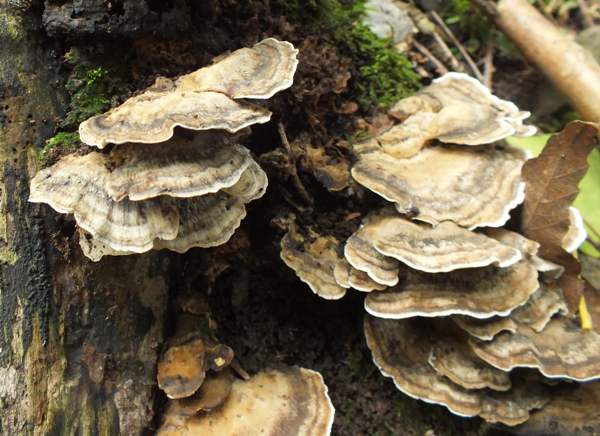
A very variable small-pored fungus, the Smoky Bracket can occur either as a resupinate crust on the underside of a fallen branch, as a reflexed bracket on the side of dead hardwood (or very occasionally on conifer wood), or even as a rounded cap with a short stem (see small image in the 'Identification' section, below) when growing on the upper surface of dead wood.
Despite its shape-shifting capability, this crust fungus is recognisable by its grey fertile surface.
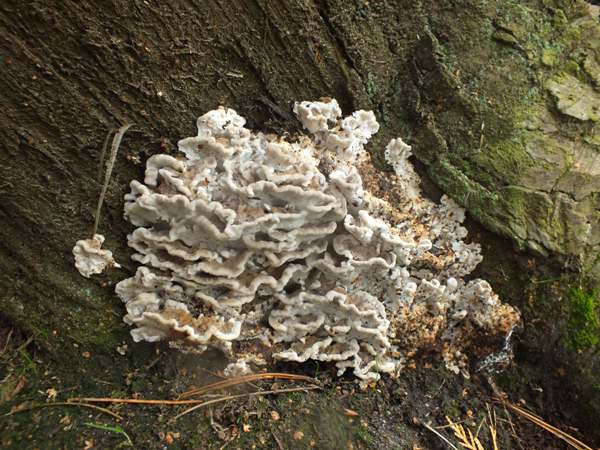
Distribution
Common and widespread in most parts of Britain and Ireland, this wood-rotting fungus is found also throughout mainland Europe as well as in many other parts of the world including North America.
Taxonomic history
Smoky Bracket was first described scientifically in 1787 by German botanist Carl Ludwig Willdenow (1765 - 1812), who gave it the binomial name Boletus adustus. Nearly a century later, in 1880, this wood-rotting fungus acquired its currently-accepted scientific name when Finnish mycologist Petter Adolf Karsten, who created the genus Bjerkandera and several other genera, renamed it Bjerkandera adusta.
Synonyms of Bjerkandera adusta include Boletus adustus Willd., Boletus carpineus Sowerby, Boletus crispus Pers., Polyporus adustus (Willd.) Fr., Polyporus crispus (Pers.) Fr., Leptoporus adustus (Willd.) Quél., Polyporus adustus f. resupinata Bres., Gloeoporus adustus (Willd.) Pilát, and Bjerkandera adusta f. resupinata (Bourdot & Galzin) Domanski, Orlos & Skirg. (NB Some authorities place this species in the family Hapalopilaceae.)
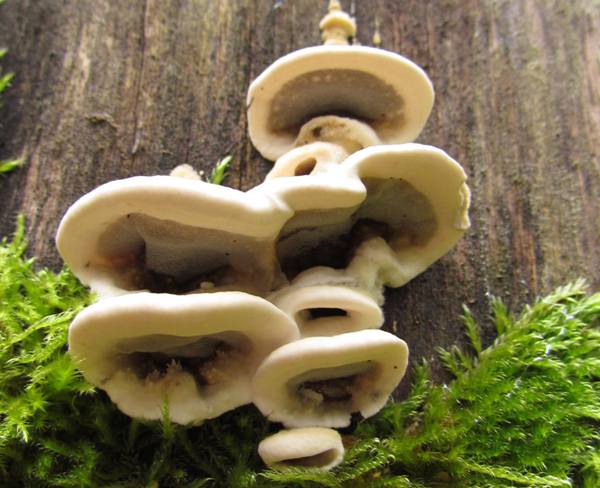
Etymology
The specific epithet adusta means scorched, while the genus Bjerkandera was named in honour of Clas Bjerkander (1735 - 1795), a Swedish clergyman, meteorologist, botanist, and entomologist who studied at the University of Uppsala, where many other famous Swedish naturalists including Carl Linnaeus and, later, Elias Magnus Fries carried out much of their research and teaching.
Identification guide
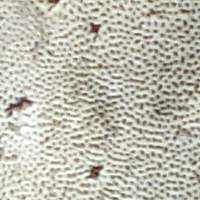 |
Cap forms
In crust, bracket or cap form; 2 to 6cm across; when resupinate or in cap form, the infertile surface is felty, becoming smooth; rounded, concentrically ringed in ochre, grey-brown and mid brown.
Tubes and pores
The fertile surface is covered in shallow tubes with minute pores spaced at 6 to 7 per mm; pore surface is grey except near the margin where it is pale buff. |
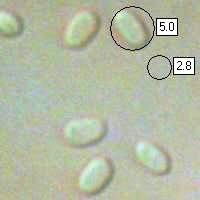 |
Spores
Ellipsoidal, smooth, 4.5-5.5 x 2.5-3µm..
Spore print
White |
Odour/taste |
Not distinctive. |
Habitat & Ecological role |
Saprobic on dead hardwood, and very occasionally on dead conifers. |
Season |
Summer, autumn and early winter. |
Similar species |
Trametes versicolor, Turkeytail, has a white fertile surface rather than grey. |
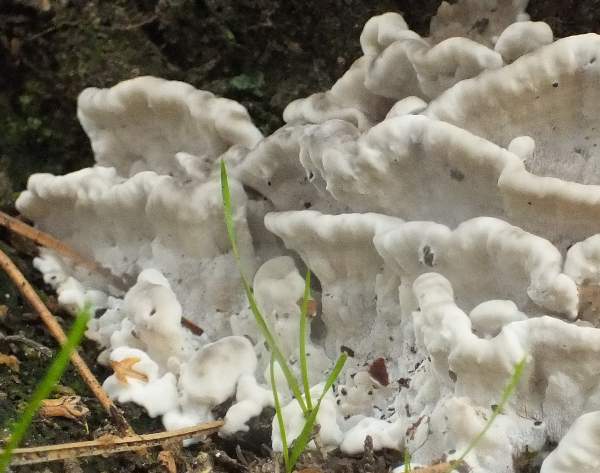
Culinary Notes
The Smoky Bracket is tough and inedible.
Reference Sources
Fascinated by Fungi, 2nd Edition, Pat O'Reilly 2016, reprinted by Coch-y-bonddu Books in 2022.
Dictionary of the Fungi; Paul M. Kirk, Paul F. Cannon, David W. Minter and J. A. Stalpers; CABI, 2008
Taxonomic history and synonym information on these pages is drawn from many sources but in particular from the British Mycological Society's GB Checklist of Fungi.
Acknowledgements
This page includes pictures kindly contributed by Tony Robinson.
Top of page...
Fascinated by Fungi. Back by popular demand, Pat O'Reilly's best-selling 450-page hardback book is available now. The latest second edition was republished with a sparkling new cover design in September 2022 by Coch-y-Bonddu Books. Full details and copies are available from the publisher's online bookshop...